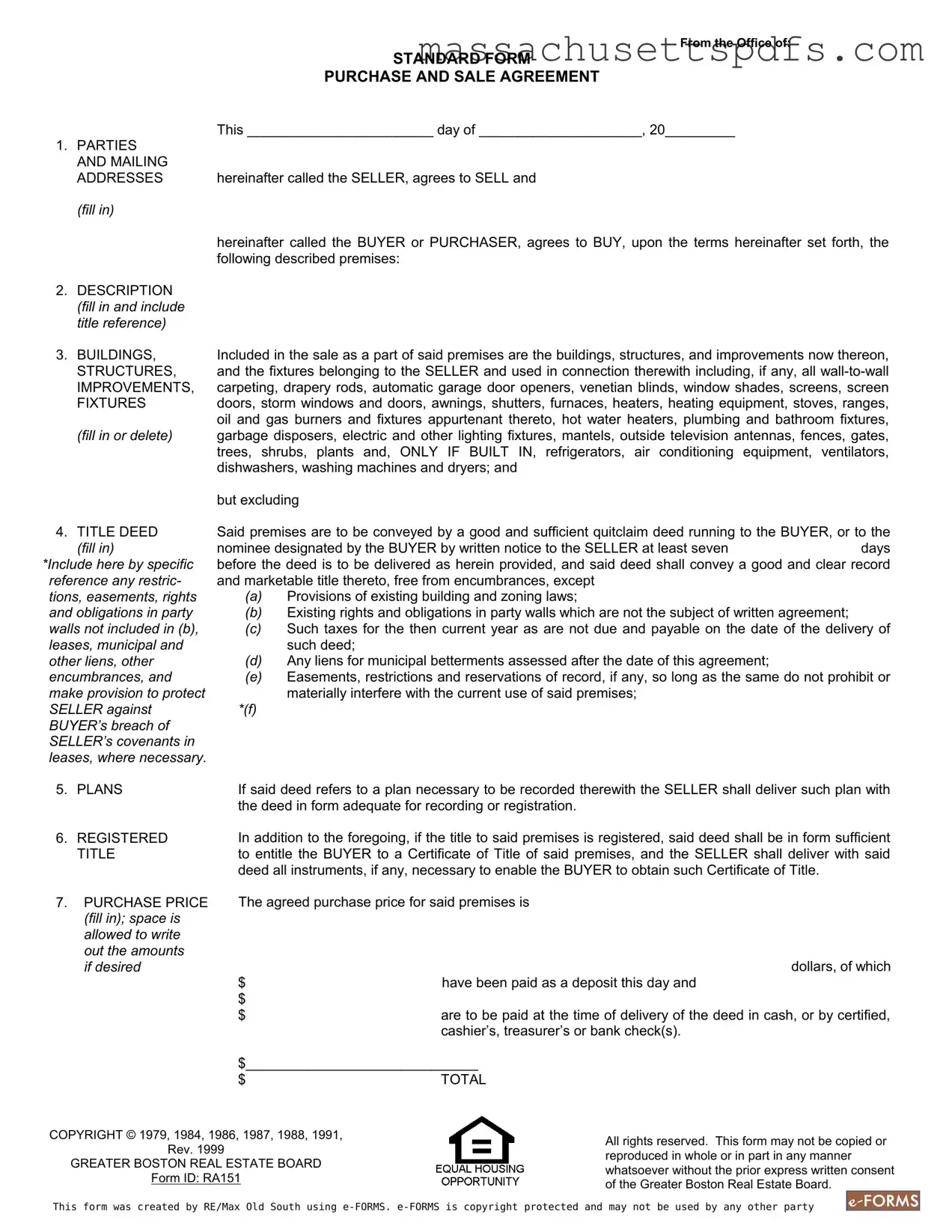Official Massachusetts Real Estate Template
The Massachusetts Real Estate form is a standardized document used in real estate transactions to outline the terms of a purchase and sale agreement between a seller and a buyer. This form provides essential details, including the parties involved, property descriptions, and purchase price, ensuring that both parties are clear on their obligations. To proceed with your real estate transaction, fill out the form by clicking the button below.
Launch Editor Here
